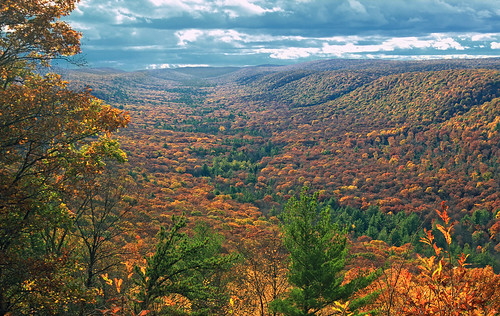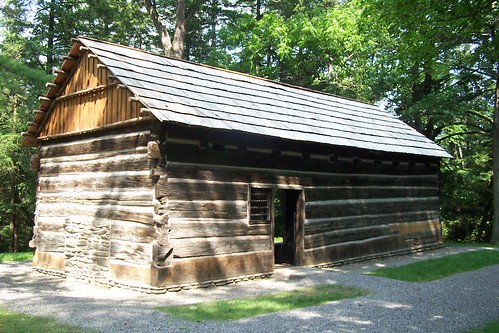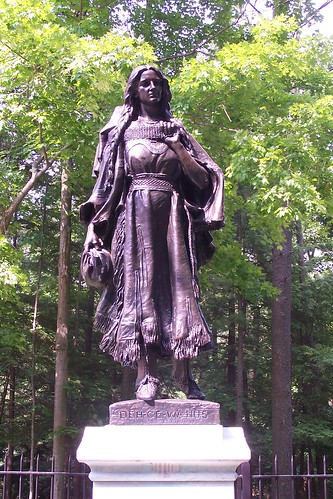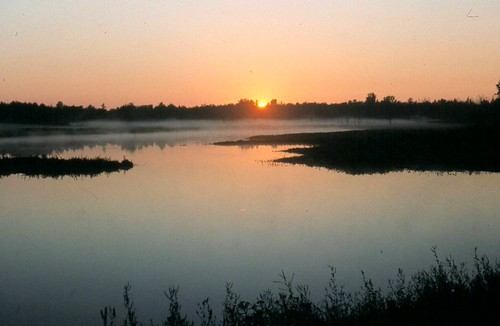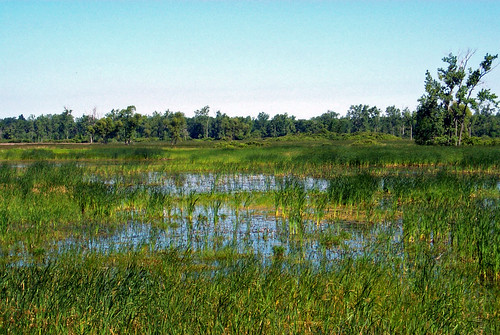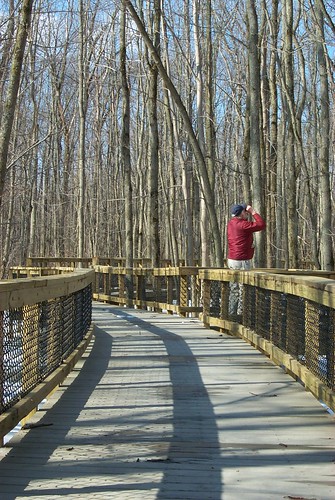Musemeelin, also known as John Musemeelin, was of the Delaware (Lenape) and was ultimately incarcerated in Philadelphia over his crimes of the killings of Captain Jack Armstrong of the Juniata and his two companions. In the earlier days of this nation, both those of European descent and those of the Native population were violent at times.
and was ultimately incarcerated in Philadelphia over his crimes of the killings of Captain Jack Armstrong of the Juniata and his two companions. In the earlier days of this nation, both those of European descent and those of the Native population were violent at times.
Other Individuals:
Shikellamy/Shickcalamy
The following is what Shickcalamy  declared to be the truth of the story concerning the murder of John Armstrong, Woodworth Arnold, and James Smith, from the beginning to the end, to wit:
declared to be the truth of the story concerning the murder of John Armstrong, Woodworth Arnold, and James Smith, from the beginning to the end, to wit:
Jack Armstrong is better known as Captain Jack, and is referred to as "John Armstrong" in the 1856 book excerpted in this post, "History of the Early Settlement of the Juniata Valley" by Uriah James Jones. Other sections of the book go on to refer to him as Jack Armstrong, at page 131. He went by both names.
That Musemeelin owing some skins to John Armstrong, the said Armstrong seized a horse of the said Musemeelin and a rifle gun; the gun was taken by James Smith, deceased. Some time last winter Musemeelin met Armstrong on the river Juniata, and paid all but twenty shillings, for which he offered a neck-belt in pawn to Armstrong, and demanded his horse, and James Armstrong refused it, and would not deliver up the horse, but enlarged the debt, as his usual custom was ; and after some quarrel the Indian went away in great anger, without his horse, to his hunting-cabin.
Some time after this, Armstrong, with his two companions, on their way to Ohio, passed by the said Musemeelin's hunting-cabin; his wife only being at home, she demanded the horse of Armstrong, because he was her proper goods, but did not get him. Armstrong had by this time sold or lent the horse to James Berry. After Musemeelin came from hunting, his wife told him that Armstrong was gone by, and that she had demanded the horse of him, but did not get him; and, as is thought, pressed him to pursue and take revenge of Armstrong.
The third day, in the morning, after James Armstrong was gone by, Musemeelin said to the two young men that hunted with him, " Come, let us go toward the Great Hills to hunt bears; " accordingly they went all three in company. After they had gone a good way,. Musemeelin, who was foremost, was told by the two young men that they were out of their course. "Come you along," said Musemeelin; and they accordingly followed him till they came to the path that leads to the Ohio. Then Musemeelin told them he had a good mind to go and fetch his horse back from Armstrong, and desired the two young men to come along. Accordingly they went. It was then almost night, and they traveled till next morning.
Musemeelin said, " Now they are not far off. We will make ourselves black; then they will be frightened, and will deliver up the horse immediately; and I will tell Jack that if he don't give me the horse I will kill him;" and when he said so, he laughed.
The young men thought he joked, as he used to do. They did not blacken themselves, but he did. When the sun was above the trees, or about an hour high, they all came to the fire, where they found James Smith sitting; and they also sat down. Musemeelin asked where Jack was. Smith told him that he was gone to clear the road a little. Musemeelin said he wanted to speak with him, and went that way, and after he had gone a little distance from the fire, he said something, and looked back laughing, but, he having a thick throat, and his speech being very bad, and their talking with Smith hindering them from understanding what he said, they did not mind it. They being hungry. Smith told them to kill some turtles, of which there were plenty, and they would make some bread by-and-by, and would all eat together.
While they were talking, they heard a gun go off, at which time Woodworth Arnold was killed, as they learned afterward. Soon after, Musemeelin came back and said, " Why did you not kill that white man, according as I bid you? I have laid the other two down." At this they were surprised ; and one of the "young men, commonly called Jimmy, ran away to the river-side. Musemeelin said to the other, " How will you do to kill Catawbas, if you cannot kill white men? You cowards I'll show you how you must do ; " and then, taking up the English axe that lay there, he struck it three times into Smith's, head before he died. Smith never stirred. Then he told the young Indian to call the other, but he was so terrified he could not call.
Musemeelin then went and fetched him, and said that two of the white men were killed, he must now go and kill the third ; then each of them would have killed one. But neither of them dared venture to talk any thing about it. Then he pressed them to go along with him; he went foremost. Then one of the young men told the other, as they went along, " My friend, don't you kill any of the white people, let him do what he will; I have not killed Smith; he has done it himself; we have no need to do such a barbarous thing."
Musemeelin being then a good way before them, in a hurry, they soon saw John Armstrong sitting upon an old log. Musemeelin spoke to him and said " Where is my horse? " Armstrong made answer and said, " He will come by-and-by ; you shall have him." "I want him now," said Musemeelin. Armstrong answered, " You shall have him. Come, let us go to that fire," (which was at some distance from the place where Armstrong sat,) "and let us talk and smoke together." "Go along, then," said Musemeelin. " I am coming,'^ said Armstrong, "do you go before, Musemeelin; do you go foremost." Armstrong looked then like a dead man, and went toward the fire, and was immediately shot in his back by Musemeelin, and fell.
Musemeelin then took his hatchet and struck it into Armstrong's head, and said, "Give me my horse, I tell you." By this time one of the young men had fled again that had gone away before, but he returned in a short time. Musemeelin then told the young men they must not offer to discover or tell a word about what had been done, for their lives ; but they must help him to bury Jack, and the other two were to be thrown into the river. After that was done, Musemeelin ordered them to load the horses and follow toward the hill, where they intended to hide the goods. Accordingly they did; and, as they were going, Musemeelin told them that, as there were a great many Indians hunting about that place, if they should happen to meet with any they must be killed to prevent betraying them.. As they went along, Musemeelin going before, the two young men agreed to run away as soon as they could meet with any Indians, and not to hurt anybody.
They came to the desired place; the horses were unloaded, and Musemeelin opened the bundles, and offered the two young men each a parcel of goods. They told him that as they had already sold their skins, and everybody knew they had nothing, they would certainly be charged with a black action were they to bring any goods to the town, and therefore would not accept of any, but promised nevertheless not to betray him. " Now," says Musemeelin, '' I know what you were talking about when you stayed so far behind." The two young men being in great danger of losing their lives--of which they had been much afraid all that day--accepted of what he offered to them, and the rest of the goods they put in a heap and covered them from the rain, and then went to their hunting-cabin.
Musemeelin, unexpectedly finding two or three more Indians there, laid down his goods, and said he had killed Jack Armstrong and taken pay for his horse, and should any of them discover it, that person he would likewise kill, but otherwise they might all take a part of the goods. The young man called Jimmy went to Shamokin, after Musemeelin was gone to bury the goods, with three more Indians, with whom he had prevailed ; one of them was Neshaleeny's son, whom he had ordered to kill James Smith ; but these Indians would not have any of the goods. Some time after the young Indian had been in Shamokin, it was whispered about that some of the Delaware Indians had killed Armstrong and his men. A drunken Indian came to one of the Tudolous houses at night and told the man of the house that he could tell him a piece of bad news. " What is that?" said the other. The drunken man said, "Some of our Delaware Indians have killed Armstrong and his men, which if our chiefs should not resent, and take them up, I will kill them myself, to prevent a disturbance between us and the white people, our brethren."
The next morning Shickcalamy and some other Indians of the Delawares were called to assist Allumoppies in council; when Shickcalamy and Allumoppies got one of the Tudolous Indians to write a letter to me, to desire me to come to Shamokin in all haste--that the Indians were very much dissatisfied in mind. This letter was brought to my house by four Delaware Indians, sent express; but I was then in Philadelphia, and when I came home and found all particulars mentioned in this letter, and that none of the Indians of the Six Nations had been down, I did not care to meddle with Delaware Indian affairs, and stayed at home till I received the governor's orders to go, which was about two weeks after. Allumoppies was advised by his council to employ a conjuror, or prophet, as they call it, to find out the murderer.
Accordingly he did, and the Indians met. The seer, being busy all night, told them in the morning to examine such and such a one that was present when Armstrong was killed, naming the two young men. Musemeelin was present. Accordingly, Allumoppies, Quitheyquent, and Thomas Green, an Indian, went to him that had fled first, and examined him. He told the whole story very freely. Then they went to the other, but he would not say a word, and they went away and left him. The three Indians returned to Shickcalamy and informed them of what discovery they had made, when it was agreed to secure the murderers and deliver them up to the white people.
Then a great noise arose among the Delaware Indians, and some were afraid of their lives and went into the woods. Not one cared to meddle with Musemeelin and the other that could not be prevailed on to discover any thing, because of the resentment of their families ; but they being pressed by Shickcalamy's son to secure the murderers, otherwise they would be cut off from the chain of friendship, four or five of the Delawares made Musemeelin and the other young man prisoners, and tied them both.
They lay twenty-four hours, and none would venture to conduct them down, because of the great division among the Delaware Indians ; and Allumoppies, in danger of being killed, fled to Shickcalamy and begged his protection. At last Shickcalamy's son. Jack, went to the Delawares,--most of them being drunk, as they had been for several days,--and told them to deliver the prisoners to Alexander Armstrong, and they were afraid to do it ; they might separate their heads from their bodies and lay them in the canoe, and carry them to Alexander to roast and eat them ; that would satisfy his revenge, as he wants to eat Indians. They prevailed with the said Jack to assist them ; and accordingly he and his brother, and some of the Delawares, went with two canoes and carried them off.
Other Individuals:
Shikellamy/Shickcalamy
Jack Armstrong is better known as Captain Jack, and is referred to as "John Armstrong" in the 1856 book excerpted in this post, "History of the Early Settlement of the Juniata Valley" by Uriah James Jones. Other sections of the book go on to refer to him as Jack Armstrong, at page 131. He went by both names.
That Musemeelin owing some skins to John Armstrong, the said Armstrong seized a horse of the said Musemeelin and a rifle gun; the gun was taken by James Smith, deceased. Some time last winter Musemeelin met Armstrong on the river Juniata, and paid all but twenty shillings, for which he offered a neck-belt in pawn to Armstrong, and demanded his horse, and James Armstrong refused it, and would not deliver up the horse, but enlarged the debt, as his usual custom was ; and after some quarrel the Indian went away in great anger, without his horse, to his hunting-cabin.
Some time after this, Armstrong, with his two companions, on their way to Ohio, passed by the said Musemeelin's hunting-cabin; his wife only being at home, she demanded the horse of Armstrong, because he was her proper goods, but did not get him. Armstrong had by this time sold or lent the horse to James Berry. After Musemeelin came from hunting, his wife told him that Armstrong was gone by, and that she had demanded the horse of him, but did not get him; and, as is thought, pressed him to pursue and take revenge of Armstrong.
The third day, in the morning, after James Armstrong was gone by, Musemeelin said to the two young men that hunted with him, " Come, let us go toward the Great Hills to hunt bears; " accordingly they went all three in company. After they had gone a good way,. Musemeelin, who was foremost, was told by the two young men that they were out of their course. "Come you along," said Musemeelin; and they accordingly followed him till they came to the path that leads to the Ohio. Then Musemeelin told them he had a good mind to go and fetch his horse back from Armstrong, and desired the two young men to come along. Accordingly they went. It was then almost night, and they traveled till next morning.
Musemeelin said, " Now they are not far off. We will make ourselves black; then they will be frightened, and will deliver up the horse immediately; and I will tell Jack that if he don't give me the horse I will kill him;" and when he said so, he laughed.
The young men thought he joked, as he used to do. They did not blacken themselves, but he did. When the sun was above the trees, or about an hour high, they all came to the fire, where they found James Smith sitting; and they also sat down. Musemeelin asked where Jack was. Smith told him that he was gone to clear the road a little. Musemeelin said he wanted to speak with him, and went that way, and after he had gone a little distance from the fire, he said something, and looked back laughing, but, he having a thick throat, and his speech being very bad, and their talking with Smith hindering them from understanding what he said, they did not mind it. They being hungry. Smith told them to kill some turtles, of which there were plenty, and they would make some bread by-and-by, and would all eat together.
While they were talking, they heard a gun go off, at which time Woodworth Arnold was killed, as they learned afterward. Soon after, Musemeelin came back and said, " Why did you not kill that white man, according as I bid you? I have laid the other two down." At this they were surprised ; and one of the "young men, commonly called Jimmy, ran away to the river-side. Musemeelin said to the other, " How will you do to kill Catawbas, if you cannot kill white men? You cowards I'll show you how you must do ; " and then, taking up the English axe that lay there, he struck it three times into Smith's, head before he died. Smith never stirred. Then he told the young Indian to call the other, but he was so terrified he could not call.
Musemeelin then went and fetched him, and said that two of the white men were killed, he must now go and kill the third ; then each of them would have killed one. But neither of them dared venture to talk any thing about it. Then he pressed them to go along with him; he went foremost. Then one of the young men told the other, as they went along, " My friend, don't you kill any of the white people, let him do what he will; I have not killed Smith; he has done it himself; we have no need to do such a barbarous thing."
Musemeelin being then a good way before them, in a hurry, they soon saw John Armstrong sitting upon an old log. Musemeelin spoke to him and said " Where is my horse? " Armstrong made answer and said, " He will come by-and-by ; you shall have him." "I want him now," said Musemeelin. Armstrong answered, " You shall have him. Come, let us go to that fire," (which was at some distance from the place where Armstrong sat,) "and let us talk and smoke together." "Go along, then," said Musemeelin. " I am coming,'^ said Armstrong, "do you go before, Musemeelin; do you go foremost." Armstrong looked then like a dead man, and went toward the fire, and was immediately shot in his back by Musemeelin, and fell.
Musemeelin then took his hatchet and struck it into Armstrong's head, and said, "Give me my horse, I tell you." By this time one of the young men had fled again that had gone away before, but he returned in a short time. Musemeelin then told the young men they must not offer to discover or tell a word about what had been done, for their lives ; but they must help him to bury Jack, and the other two were to be thrown into the river. After that was done, Musemeelin ordered them to load the horses and follow toward the hill, where they intended to hide the goods. Accordingly they did; and, as they were going, Musemeelin told them that, as there were a great many Indians hunting about that place, if they should happen to meet with any they must be killed to prevent betraying them.. As they went along, Musemeelin going before, the two young men agreed to run away as soon as they could meet with any Indians, and not to hurt anybody.
They came to the desired place; the horses were unloaded, and Musemeelin opened the bundles, and offered the two young men each a parcel of goods. They told him that as they had already sold their skins, and everybody knew they had nothing, they would certainly be charged with a black action were they to bring any goods to the town, and therefore would not accept of any, but promised nevertheless not to betray him. " Now," says Musemeelin, '' I know what you were talking about when you stayed so far behind." The two young men being in great danger of losing their lives--of which they had been much afraid all that day--accepted of what he offered to them, and the rest of the goods they put in a heap and covered them from the rain, and then went to their hunting-cabin.
Musemeelin, unexpectedly finding two or three more Indians there, laid down his goods, and said he had killed Jack Armstrong and taken pay for his horse, and should any of them discover it, that person he would likewise kill, but otherwise they might all take a part of the goods. The young man called Jimmy went to Shamokin, after Musemeelin was gone to bury the goods, with three more Indians, with whom he had prevailed ; one of them was Neshaleeny's son, whom he had ordered to kill James Smith ; but these Indians would not have any of the goods. Some time after the young Indian had been in Shamokin, it was whispered about that some of the Delaware Indians had killed Armstrong and his men. A drunken Indian came to one of the Tudolous houses at night and told the man of the house that he could tell him a piece of bad news. " What is that?" said the other. The drunken man said, "Some of our Delaware Indians have killed Armstrong and his men, which if our chiefs should not resent, and take them up, I will kill them myself, to prevent a disturbance between us and the white people, our brethren."
 |
| See page for author [Public domain], via Wikimedia Commons |
Accordingly he did, and the Indians met. The seer, being busy all night, told them in the morning to examine such and such a one that was present when Armstrong was killed, naming the two young men. Musemeelin was present. Accordingly, Allumoppies, Quitheyquent, and Thomas Green, an Indian, went to him that had fled first, and examined him. He told the whole story very freely. Then they went to the other, but he would not say a word, and they went away and left him. The three Indians returned to Shickcalamy and informed them of what discovery they had made, when it was agreed to secure the murderers and deliver them up to the white people.
Then a great noise arose among the Delaware Indians, and some were afraid of their lives and went into the woods. Not one cared to meddle with Musemeelin and the other that could not be prevailed on to discover any thing, because of the resentment of their families ; but they being pressed by Shickcalamy's son to secure the murderers, otherwise they would be cut off from the chain of friendship, four or five of the Delawares made Musemeelin and the other young man prisoners, and tied them both.
They lay twenty-four hours, and none would venture to conduct them down, because of the great division among the Delaware Indians ; and Allumoppies, in danger of being killed, fled to Shickcalamy and begged his protection. At last Shickcalamy's son. Jack, went to the Delawares,--most of them being drunk, as they had been for several days,--and told them to deliver the prisoners to Alexander Armstrong, and they were afraid to do it ; they might separate their heads from their bodies and lay them in the canoe, and carry them to Alexander to roast and eat them ; that would satisfy his revenge, as he wants to eat Indians. They prevailed with the said Jack to assist them ; and accordingly he and his brother, and some of the Delawares, went with two canoes and carried them off.


